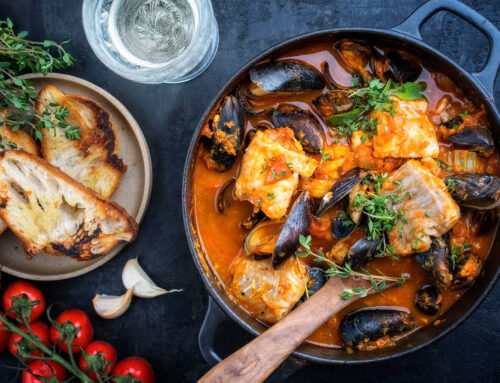Italian and Venetian Influence in Greek Cuisine
Throughout history, Greek cuisine has been shaped by various cultural influences, including those from Italy and the Venetian Republic. Italian and Venetian culinary traditions have left their mark on Greek gastronomy, introducing new ingredients, techniques, and flavors that have been integrated into the rich tapestry of Greek cuisine. In this comprehensive guide, we explore the Italian and Venetian influence on Greek culinary traditions, providing an insightful resource for culinary arts students, chefs, researchers, and the general public interested in understanding the multifaceted origins of Greek cuisine.
Culinary Techniques and Innovations
Italian and Venetian culinary practices have left a lasting impact on Greek cooking techniques. The art of pasta-making, for example, made its way from Italy to Greece, where it evolved into a variety of Greek pasta dishes, such as “hilopites” and “trahana.” Venetian techniques for preparing seafood and fish, including grilling, stewing, and marinating, have also become integral to Greek cuisine.
Ingredients and Flavors
Italian and Venetian influences on Greek cuisine are evident in the variety of ingredients and flavors that have been adopted and adapted by Greek cooks. Italian ingredients like tomatoes, potatoes, and bell peppers were introduced to Greece and have since become staples in Greek dishes. The use of cheeses like kefalotyri and graviera, inspired by Italian hard cheeses, showcases the lasting impact of Italian culinary traditions on Greek cuisine.
Dishes and Recipes
Specific Italian and Venetian dishes have been incorporated into Greek cuisine, often with a distinct Greek twist. For example, “soutzoukakia,” a Greek dish made of spiced meatballs cooked in tomato sauce, is reminiscent of Italian meatballs. “Pastitsio,” a baked pasta dish layered with ground meat and béchamel sauce, bears similarities to the Italian lasagna. In the Ionian Islands, which were under Venetian rule for centuries, dishes like “pastitsada” (a meat and pasta dish) and “sofrito” (a slow-cooked beef dish) highlight the Venetian influence on local Greek culinary traditions.
Culinary Exchange and Adaptation
The exchange of culinary knowledge and practices between Italy, Venice, and Greece has led to a unique fusion of flavors and techniques that characterizes Greek cuisine. Greek cooks have adeptly adapted Italian and Venetian dishes to suit local tastes and ingredients, creating a distinct culinary identity that reflects the shared history and cultural connections between these Mediterranean neighbors.
The Italian and Venetian influence on Greek cuisine has contributed to the richness and diversity of Greek culinary traditions. As culinary arts students, chefs, researchers, and food enthusiasts explore the world of Greek food, understanding the impact of Italian and Venetian culinary practices is essential to appreciating the depth and complexity of Greek gastronomy. By acknowledging the role of Italian and Venetian influences in shaping Greek cuisine, we can celebrate the vibrant culinary traditions that have emerged from this dynamic exchange of flavors, ingredients, and techniques.


